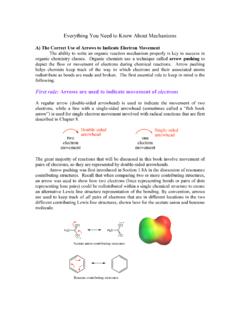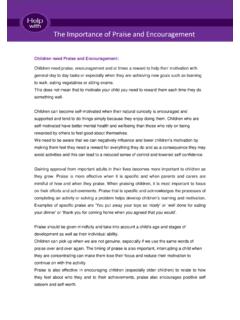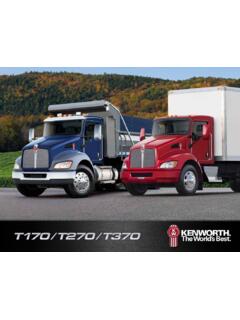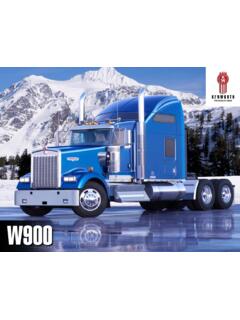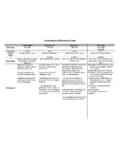Transcription of MODEL BOILERS - Plans for Everything
1 MODEL BOILERS A booklet devoted to the construction ofmodel BOILERS may well open with a fewcautionary words, as the dangers connectedwith steam-raisers are very real; and thoughmodel-boiler explosions are fortunately rare, ifthey do occur they may be extremelydisastrous. Therefore the following warnings:(1.) Do not use tins or thin sheet ironfor BOILERS . One cannot tell how farinternal corrosion has gone. The scalingof 1/100 inch of metal off a "tin" isobviously vastly more serious than thesame diminution in the thickness of,say, a 1/4-inch plate.
2 Brass and copperare the metals to employ, as they donot deteriorate at all provided a properwater supply be maintained. (2.) If in doubt, make the boiler muchmore solid than is needed, rather thanrun any risks. (3.) Fit a steam gage, so that you mayknow what is happening.(4.) Test your boiler under steam, anddon't work it at more than half thepressure to which it has been tested.(See p. 220.) In the present chapter we will assume thatthe barrels of all the BOILERS described aremade out of solid-drawn seamless coppertubing, which can be bought in all diametersup to 6 inches, and of any one of severalthicknesses.
3 Brass tubing is more easilysoldered, but not so good to braze, andgenerally not so strong as copper, otherthings being equal. Solid-drawn tubing ismore expensive than welded tubing or anequivalent amount of sheet metal, but isconsiderably stronger than the best rivetedtube. Boiler may be purchased ready turned to stampings rather than castings, as thefirst are more homogeneous, and thereforecan be somewhat lighter. Flanging Boiler EndsTo make a good job, a plate for an end shouldbe screwed to a circular block of hard wood(oak or boxwood), having an outside diameterless than the inside diameter of the boilerbarrel by twice the thickness of the metal ofthe end, and a rounded-off edge.
4 The platemust be annealed by being heated to a dullred and dipped in cold water. The processmust be repeated should the hammeringmake the copper stubborn. should be used liberally, and be screwedand nutted at the ends. As the cutting of thescrew thread reduces the effective diameter,the strength of a stay is only that of thesection at the bottom of the threads. RivetingThough stays will prevent the ends of theboiler blowing off, it is very advisable to rivetthem through the flanges to the ends of thebarrel, as this gives mutual supportindependently of soldering or brazing.
5 Properboiler rivets should be procured, and annealedbefore use. Make the rivet holes a good fit,and drill the two parts to be held together inone operation, to ensure the holes being inline. Rivets will not close properly if too for closing the rivet heads may be boughtfor a few pence. Soldering, not exposed directly to the furnaceflames may be soldered with a solder meltingnot below 350 degrees Fahrenheit. Surfaces tobe riveted together should be "tinned" beforeriveting, to ensure the solder getting a goodhold afterwards. The solder should be sweatedright through the joint with a blow-lamp tomake a satisfactory 1 MODEL BOILERS All joints exposed to the flames should besilver-soldered, and other joints as well if theworking pressure is to exceed 50 lbs.
6 To thesquare inch. Silver-soldering requires the useof a powerful blow-lamp or gas-jet; ordinarysoft soldering bits and temperatures areineffective. Brazing is better still, but shouldbe done by an expert, who may be relied onnot to burn the metal. It is somewhat risky tobraze brass, which melts at a temperature notfar above that required to fuse the spelter(brass solder). Getting the prepared parts of aboiler silver-soldered or brazed together isinexpensive, and is worth the money Points in DesignThe efficiency of a boiler is governed chiefly(1) by the amount of heating surface exposedto the flames; (2) by the distribution of theheating surface; (3) by the amount of fuelwhich can be burnt in the furnace in a giventime; (4) by avoiding wastage of heat.
7 The simplest form of boiler, depicted in Figure78, is extremely inefficient because of itssmall heating surface. A great deal of the heatescapes round the sides and the ends of theboiler. Moreover, a good deal of the heatwhich passes into the water is radiated outagain, as the boiler is exposed directly to theair. Page 2 MODEL BOILERS Page 3 MODEL BOILERS Page 4 MODEL BOILERS Figure 79 shows a great improvement indesign. The boiler is entirely enclosed, exceptat one end, so that the hot gases get rightround the barrel, and the effective heatingsurface has been more than doubled by fittinga number of water-tubes, aaa, bbbb, which lieright in the flames, and absorb much heatwhich would otherwise escape.
8 The tubesslope upwards from the chimney end, wherethe heat is less, to the fire-door end, wherethe heat is fiercer, and a good circulation isthus assured. The Babcock and Wilcox boileris the highest development of this system,which has proved very successful, and may berecommended for MODEL BOILERS of all heating surface may be increasedindefinitely by multiplying the number oftubes. If a solid fuel-coal, coke, charcoal, is used, the walls of the casing should be lined withasbestos or fire-clay to prevent the metalbeing burnt away.
9 The horizontal boiler has an advantage overthe vertical in that, for an equal diameter ofbarrel, it affords a larger water surface, andis, therefore, less subject to "priming," whichmeans the passing off of minute globules ofwater with the steam. This trouble, very likelyto occur if the boiler has to run an engine toolarge for it, means a great loss of efficiency,but it may be partly cured by making thesteam pass through coils exposed to thefurnace gases on its way to the engine. This"superheating" evaporates the globules anddries the steam, besides raising itstemperature.
10 The small water-tube ispreferable to the small fire-tube connectingfurnace and chimney, as its surface is exposedmore directly to the flames; also it increases,instead of decreasing, the total volume ofwater in the Vertical BoilerThe vertical boiler illustrated by Figure 80 iseasily made. The absence of a water jacket tothe furnace is partly compensated by fittingsix water-tubes in the bottom. As shown, thebarrel is 8 inches long and 6 inches in outsidediameter, and the central flue 1-1/2 inchesacross outside solid-drawn 1/16-inch tubing,flanged ends, and four 1/4-inch stays--disposed as indicated in Figure 80 (a) and(b)--are used.


